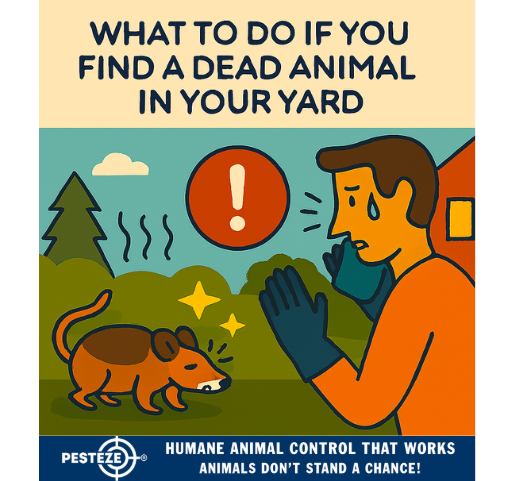WHAT TO DO IF YOU FIND A DEAD ANIMAL IN YOUR YARD

WHAT TO DO IF YOU FIND A DEAD ANIMAL IN YOUR YARD
SUMMARY
Discovering a dead animal in your yard can be unsettling and potentially hazardous. Whether it’s a bird, squirrel, raccoon, or stray pet, handling the situation properly is essential for health, safety, and legal compliance. This guide outlines the steps to safely remove the animal, protect your household, and report the incident if necessary. With the right precautions, you can restore your yard and prevent future occurrences.
FEATURES
-
Avoid Direct Contact: Use gloves and tools to prevent exposure to bacteria, parasites, or disease.
-
Identify the Animal if Possible: Note species, size, and any visible injuries for reporting purposes.
-
Contact Local Animal Control: Notify authorities if the animal is large, a pet, or shows signs of disease.
-
Dispose According to Local Laws: Follow municipal guidelines for safe and legal disposal.
-
Sanitize the Area Thoroughly: Clean the spot with disinfectant to remove biohazards and odors.
-
Monitor for Recurring Issues: Watch for signs of predators, illness, or environmental hazards that may attract wildlife.
GUIDE DESCRIPTION
Finding a dead animal in your yard is more than just unpleasant—it can pose health risks and indicate larger environmental issues. Whether the animal died of natural causes, injury, or disease, it’s important to handle the situation with care and responsibility.
Start by avoiding direct contact. Wear disposable gloves and use a shovel or similar tool to inspect or move the animal. Even small animals can carry parasites, bacteria, or viruses that are harmful to humans and pets.
If safe to do so, try to identify the animal. Note its species, approximate size, and any visible injuries or abnormalities. This information may be useful when contacting local authorities or wildlife services.
For large animals, pets, or those showing signs of disease (such as foaming at the mouth or unusual behavior), contact your local animal control or public health department. They can advise on safe removal and may investigate further if the death appears suspicious or part of a larger issue.
Disposal methods vary by location. Some municipalities allow double-bagging and placing small animals in the trash, while others require burial or professional removal. Always check local regulations before proceeding.
After removal, sanitize the area thoroughly. Use a bleach solution or commercial disinfectant to clean surfaces and remove any remaining fluids or odors. This helps prevent the spread of disease and deters scavengers.
Finally, monitor your yard for recurring issues. Frequent animal deaths may signal environmental hazards, predator activity, or disease outbreaks. Keep trash secure, remove food sources, and maintain a clean yard to reduce risks.
By following these steps, you’ll ensure a safe, respectful, and legally compliant response to finding a dead animal in your yard.
- Amy Chang


Comments 0